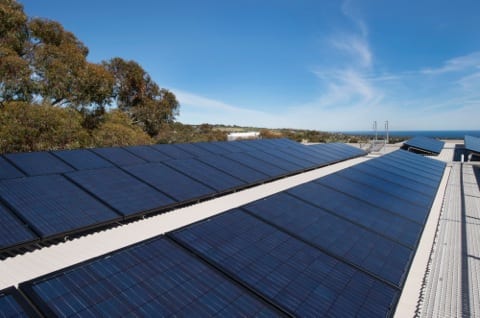The Coalition government led by Tony Abbott has detailed its plans to boost investment in large scale solar installations, as it seeks to reduce the number of wind farms that Abbott and other senior Coalition members find ugly and offensive.
In a final letter to cross-bench Senators tabled late yesterday before the revised renewable energy target legislation was passed in the Upper House, environment minister Greg Hunt outlines the range of measures he intends to take to accelerate the deployment of solar.
These include, as predicted a few weeks ago, directing the Clean Energy Finance Corp to return to its “original mandate” of focusing on emerging technologies. Solar is seen as “emerging” while wind is seen as “established.”
Hunt says the Coalition will also look to provide “potential further support” for a range of measures, including community solar and solar with storage projects via “start-up loans and grants” – possibly in much the same way as the NSW government is doing. It will also look to boost the deployment of off-grid solar.
The Coalition also says it will look to boost the uptake of solar in government housing, and promote the potential of the $20,000 instant asset write-off for small business to be used for investment in rooftop solar.
The Coalition also says it will take steps to ensure that the community, industry and the government are up to date on the lower costs of solar technologies and industry modelling (perhaps recommend a subscription to RenewEconomy’s daily newsletter – it’s free).
It will also promote and highlight the potential of solar and battery storage, and the efforts of R&D work, and the “niche” deployment provided by the Australian Renewable Energy Agency – which, like the CEFC, is another agency that the Coalition tried but failed to dismantle.
Asutralia currently has around 3,500MW of large scale wind, and about 140MW of large scale solar, mostly through the 103MW Nyngan solar plant that was recently completed. However, Australia also has around 4,200MW of small scale solar on the rooftops of homes and businesses.
Some analysts expect wind energy to account for most of the 5,500MW to be built between now and 2020 to meet the revised renewable energy target, although some suggest around 40 per cent could be met through large scale solar, particularly in Queensland and Western Australia, where market prices and demand are higher.
Bloomberg New Energy Finance overnight released a report that said over the medium term – by 2040 – Australia is likely to have 33,000MW of small-scale solar, 37,000MW of battery storage, about 15,000MW of large scale solar, and 13,500MW of large scale wind.











